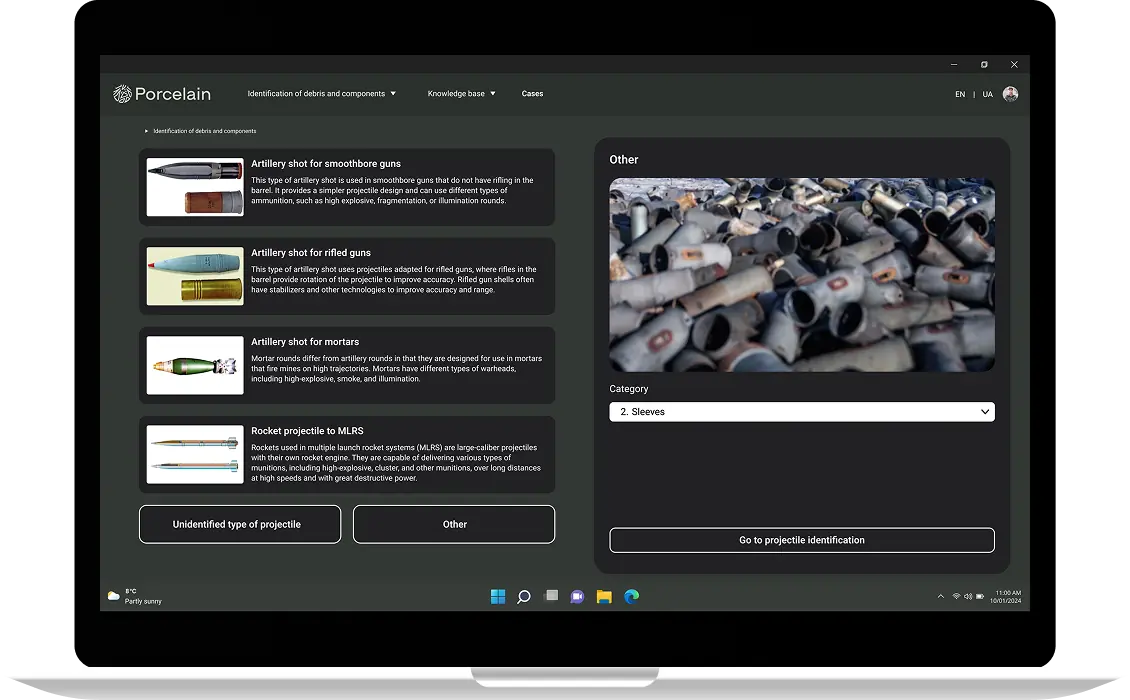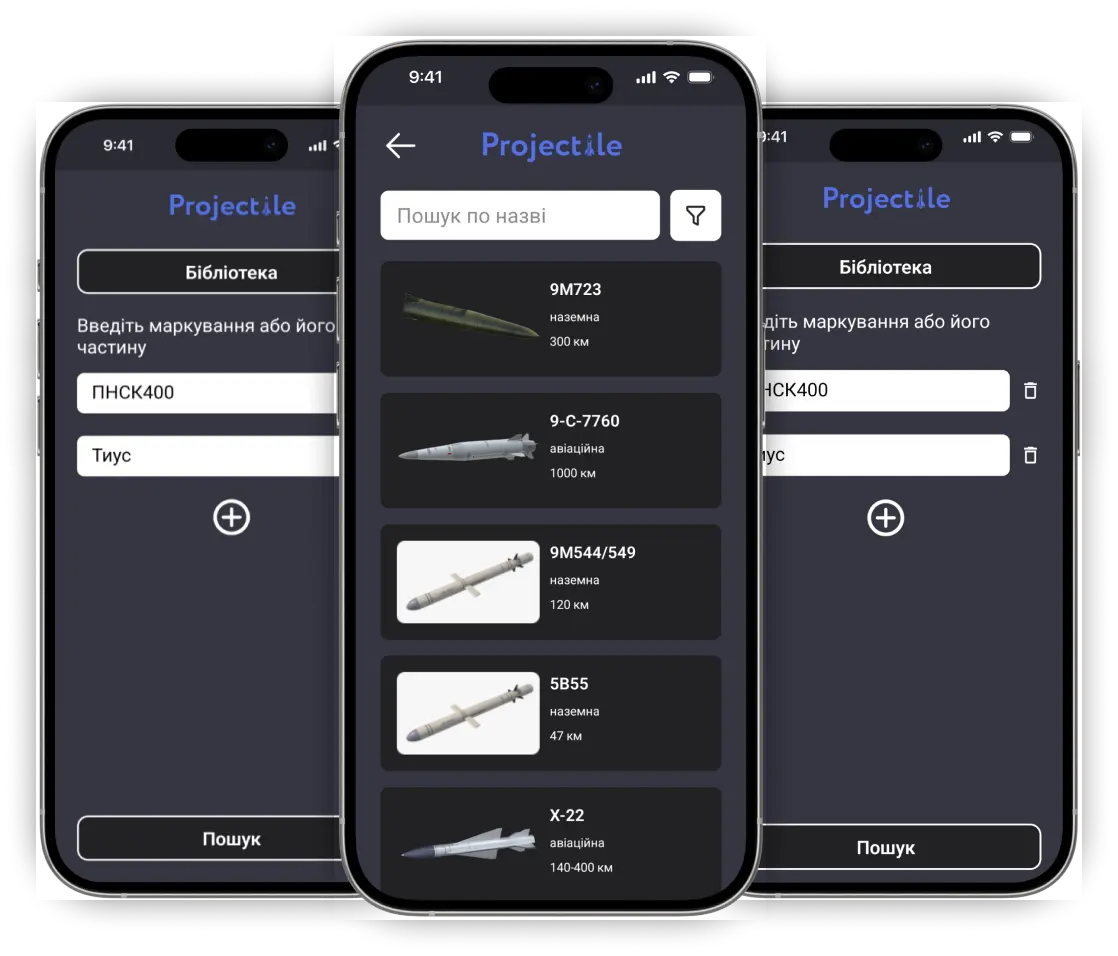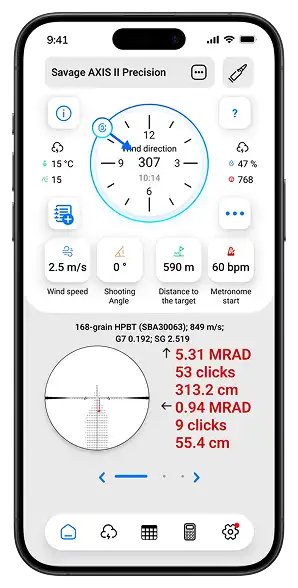Our products
Side projects
Porcelain
A system for identifying Russian ammunition and recording war crimes
Porcelain is a tool that allows the remnants of ammunition (tank shells, mine fragments, rockets, cluster elements, etc.) to determine their model, type of weapon, and the source of launch - a specific artillery system, mortar or missile system.
A library of Russian ammunition and weapons compiled from open sources, real samples, photographs, and technical descriptions;Comparison and identification algorithms that allow to quickly determine the type of weapon used;The war crimes recording function, where each identified attack can be documented with geolocation, photo fixation, and linkage to potential perpetrators.
- A library of Russian ammunition and weapons compiled from open sources, real samples, photographs, and technical descriptions;
- Comparison and identification algorithms that allow to quickly determine the type of weapon used;
- The war crimes recording function, where each identified attack can be documented with geolocation, photo fixation, and linkage to potential perpetrators.
It is a powerful tool for:
- military experts and investigators,
- human rights organizations,
- investigative journalists,
- international trials against war criminals.

Projectile
Missile identification system based on marking fragments
Projectile — is a specialized tool that allows to identify the model, type, and launcher or carrier from which they were launched based on the remaining serial numbers, technical markings or production codes on the missile debris
Automatic label recognition from photos or manual character input;A library of Russian missiles with descriptions, photos of markings, technical specifications, and carrier options (Iskander, S-300, Tor, Kalibr, etc.);A mobile application that allows for identification on the spot - in the field, under fire, or while recording crimes;Integration with the incident database - the ability to attach geolocation, photo, date, and description to each incident for further analysis or legal documentation.
- Automatic label recognition from photos or manual character input;
- A library of Russian missiles with descriptions, photos of markings, technical specifications, and carrier options (Iskander, S-300, Tor, Kalibr, etc.);
- A mobile application that allows for identification on the spot - in the field, under fire, or while recording crimes;
- Integration with the incident database - the ability to attach geolocation, photo, date, and description to each incident for further analysis or legal documentation.
Rocket-ID sashes for:
- experts in explosive engineering,
- investigators and prosecutors,
- law-enforcement structures,
- military and OSINT analysts.



